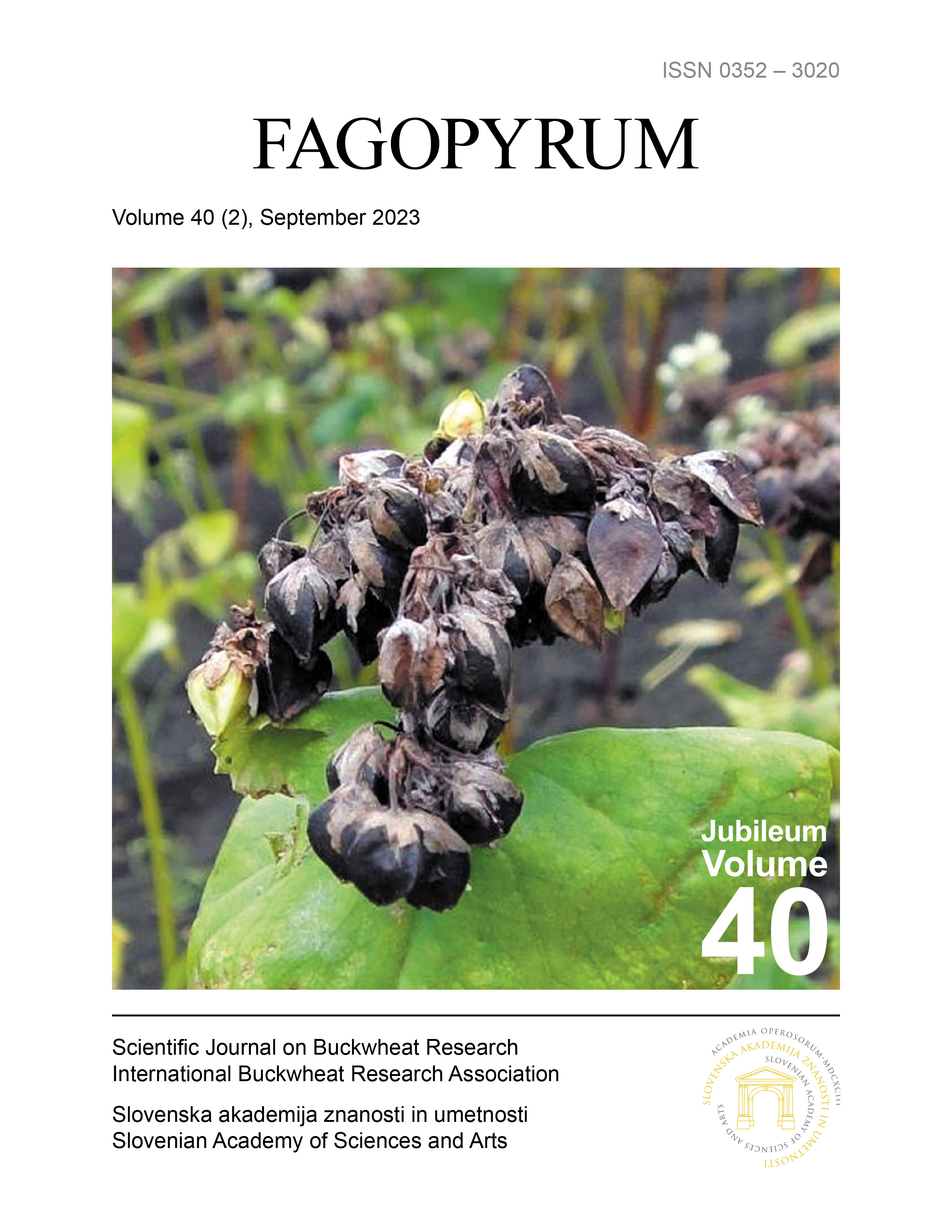Evaluation of Buckwheat Genetic Resources in Slovenia within the ECOBREED Project
DOI:
https://doi.org/10.3986/fag0036Keywords:
common buckwheat, environmental conditions, genetic resources, nutritional compoundAbstract
Understanding the diversity in morpho-phenological characteristics, as well as variations in nutrients and nutraceutical compounds among the different buckwheat genetic resources, plays an important role in their effective use and breeding purposes. In 2020 and 2021, a total of 23 buckwheat accessions were grown in the Slovenian environment. During this period, selected morpho-phenological traits were evaluated together with the analysis of protein content, total content, antioxidant activity, and 17 different phenolic compounds. A remarkable variation in the thousand seed weight was observed between the years 2020 and 2021, while the protein content remained constant in both years and locations. Regarding the content of phenolic compounds, it was confirmed that buckwheat grains are an excellent source of these compounds. Among these compounds, rutin, vitexin, epicatechin, and orientin were identified as the predominant components in the grains. The evaluation of common buckwheat accessions revealed considerable diversity in the studied characteristics within the Slovenian environment. The varieties Sweden-1, ´Tempest, and Dozhdik performed well under the Slovenian conditions.

